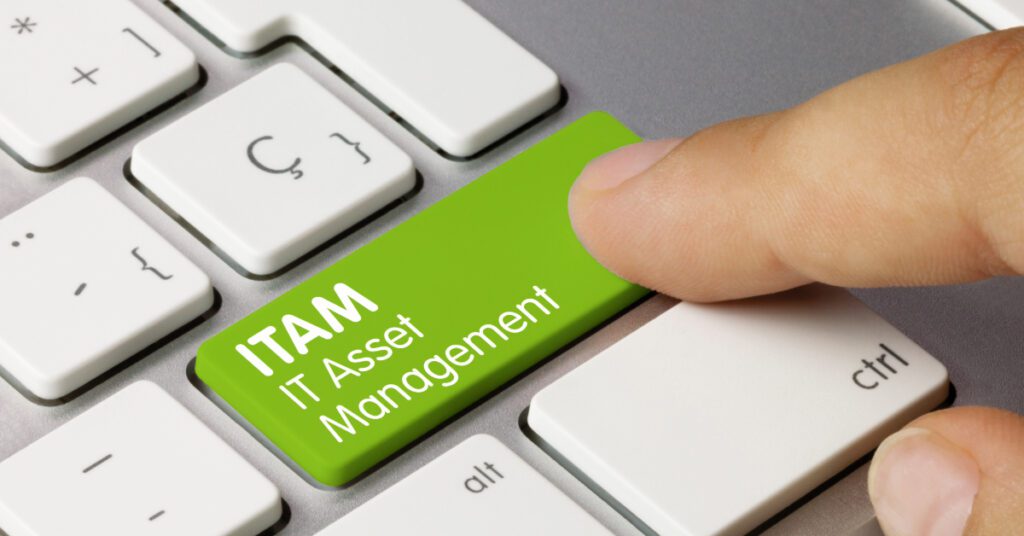
IT asset management can be overwhelming. There’s the sheer volume of assets to manage and the pressure to ensure accuracy, compliance, and security.
Then, throw in the fear of failing an audit and the cost of cyber threats, and you might end up with the classic ‘break ‘n fix’ model.
But there’s another way to manage your IT assets, one that will eliminate fear, insecurities, and stress. That way is the Cadillac of asset management, the ITAM model.
What is Proactive IT Asset Management?
When you hear the words’ proactive IT asset management,’ you might think it’s the same as preventive maintenance. However, there is one crucial difference, and that is long-term strategy.
A good analogy would be to think of your car. You change the oil and rotate the tires; that’s preventive maintenance. The planning and research to purchase a safe and reliable car is proactive management.
A robust IT asset management strategy means that your company holds the keys, and you determine where the IT environment will go. You and your team can follow the GPS with a plan, avoiding potential IT problems.
Benefits of a Proactive ITAM Strategy
One of the most significant benefits of ITAM is that you’ll be able to get to the root cause of any machine issues before they blow up, leaving your business stranded on the side of the road.
A proactive ITAM strategy means you have real-time data to make informed decisions on device lifecycle stages, upgrades, and maintenance schedules. A familiar vector of attack for cyber criminals, as crazy as it sounds, can be that unpatched printer in your office.
Along with real-time visibility, efficient asset management should include IT asset tracking on your devices. Using IT asset tags makes scheduling updates and conducting system backups easy.
Reactive vs. Proactive Support
Unfortunately, many companies can’t achieve their desired IT asset management goals. Due to the lack of a well-defined plan or limited resources, these companies use a ‘Break ‘n Fix’ model.
Going back to the car analogy, if you didn’t research and ended up with a lemon, you’ll be shelling out cash to make repairs while opening the IT environment to increased security risks, exposing your business to downtime.
Calculate your Downtime
According to Pingdom, the average downtime for an SMB in the U.S. is typically $427 per minute. This price can vary depending on the industry and size of the company, but it gives you a good idea of potential out-of-pocket costs.
Downtime Cost
Minutes of Downtime x Cost Per Minute ($427.00)
The other piece to consider is the productivity cost. If your network is down, your employees can’t do their jobs, but they must still be paid.
Productivity Cost
number of employees impacted by downtime x hourly rate of pay
Finally, we can’t forget the fines associated with a data breach. Suppose your network is down due to a cyber event. In that case, you’re now looking at paying out for lost downtime, productivity, and hefty fines.
10 Ways to Do Proactive IT Asset Management
Build an Asset Management team:
- A dedicated asset management team is a must-have for your ITAM strategy. Create one in-house or outsource to an MSP.
Establish IT Asset Management Policies:
- Consider who is responsible for asset management, define asset lifecycle, outline who handles and disposes of assets, and who is responsible for ensuring regulatory compliance.
Identify IT Assets:
- This step is crucial for ITAM. You can only create a strategy if you know what you have in the IT environment.
Pay attention to Asset Health Management:
- Using asset tags on your devices is a great way to pay attention to device health. Asset tags use an identifying number for each device to easily keep tabs.
Partner with Finances:
- ITAM is an investment, so partner with your finance team to get buy-in. Remember the cost calculator – paying for downtime, productivity loss, and fines will be much more expensive.
Predict the Employees’ Needs:
- Part of the ITAM strategy means knowing what the business needs will be in the future. Listen to your team to understand if they have the right tools.
Implement Preventative Maintenance:
- Maintenance is part of proactive IT asset management. This includes your backups, patching, and regular security checks.
Include End-of-Life Asset Management:
- Do you know how old your assets are? If not replaced, end-of-life equipment will expose your IT environment to vulnerabilities.
Focus on Continual Service Improvement:
- Continual service improvement is a mindset your organization should create and build into the company culture. Constantly be testing and improving.
Don’t Forget About IT Security:
- A robust cybersecurity culture is another element that should be built into your company culture. Proactive ITAM means your team has a firm understanding of the cybersecurity risks.
Implement IT Asset Management Solutions
If you’re one of those companies working the ‘break ‘n fix’ model feeling frustrated because you got a lemon, ONE 2 ONE wants to be your Asset Management Team.
Whenever we onboard a new client, we physically inventory all assets and tag them. Our NOC services can run scheduled updates and patches, plus offer altering services. If you are worried about tech reaching end-of-life, the ONE 2 ONE account management team will work with you to make the appropriate upgrades.
So, what are you waiting for? Connect with a ONE 2 ONE Asset Management specialist today!
